15 European Cities leading on Urban Resilience: the first International Superblock Meeting points to a common sustainability pathway
04.04.2023
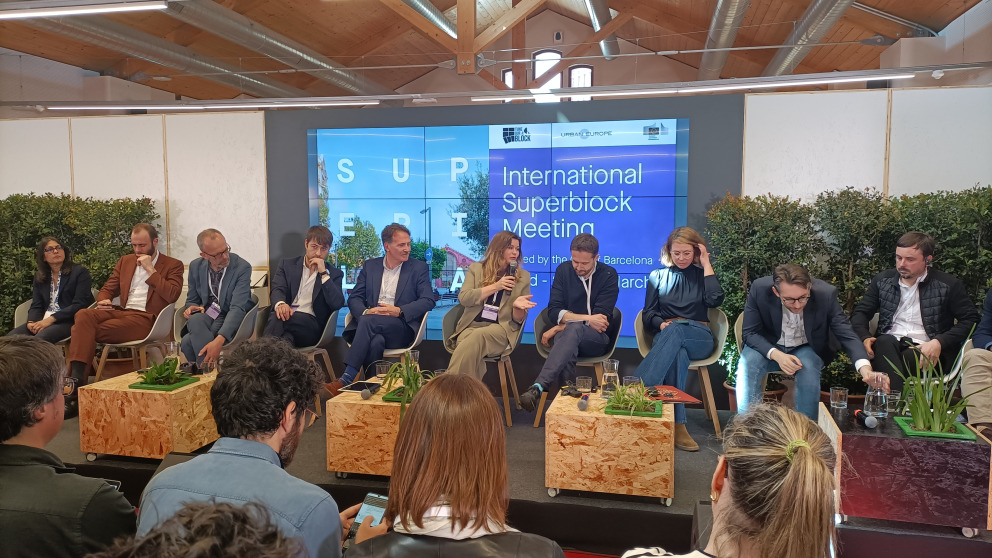
Political leaders and researchers from 15 European cities met in Barcelona at the end of March to share experiences transforming cities towards more urban resilience, more urban green, and more traffic-calmed public spaces. Their learnings can inspire the German mobility transition.
The TuneOurBlock research project aims to increase understanding and knowledge about how to transform cities towards more sustainability. Many cities are pursuing sustainability transformations to achieve more traffic safety, reduce greenhouse gas emissions, energy consumption, encourage active and healthy daily lifestyles for city dwellers, create more resilient populations and urban environments. These tasks are becoming more and more urgent, in the face of concurrent climate and health crises. While many cities share the overarching goals of urban transformations, the points of departure and contexts for embarking on their respective transformation processes vary greatly. Against this background, the TuneOurBlock project partners set out to identify and evaluate the potential of models for transforming urban spaces that may be useful to many cities, asking: what can cities learn from each other’s experiences? What strategies are common to many cities and work well? What can be done to improve the quality of urban transformations and speed them up?
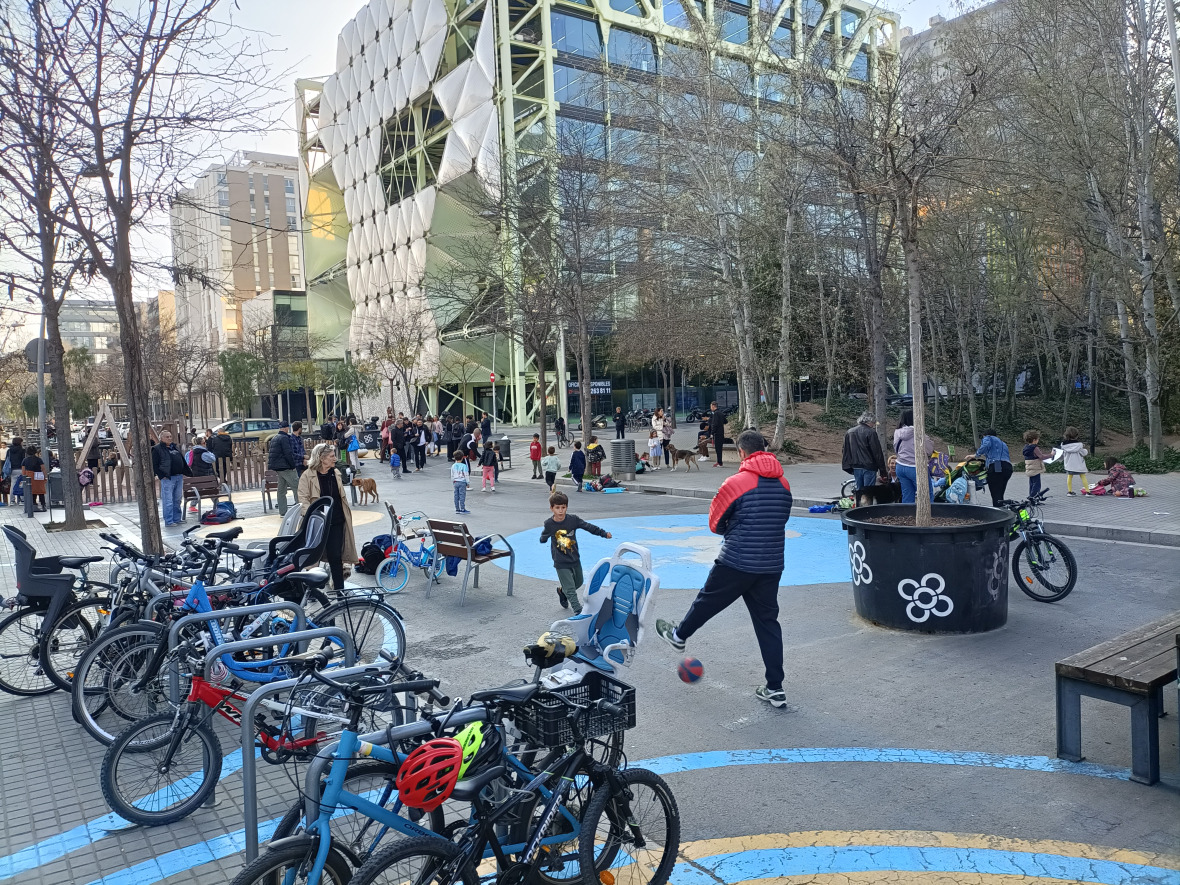
One of the most exciting examples of approaching sustainability transformations for urban spaces in recent years are the “Superblocks,” popularized by prominent and recent work implementations in Barcelona, but also practiced a decade ago by other Spanish cities like Vitoria-Gasteiz in north-eastern Spain. Cities like Ghent and Brussels have been implementing similar strategies, following approaches successfully implemented in Groningen, Netherlands already in the 1970s. (In Ghent, the Alderman responsible for implementing the policy in 2017 was rewarded in the 2018 election, becoming deputy mayor.)
The Polish city of Lodz has also recently carried out urban transformations inspired by a decades-old Dutch street design that favors people over cars, the Woonerfs. And in Germany, there are Superblock Projects in Berlin (called Kiezblocks), Leipzig (Superblocks), Hamburg (Superbüttel), and Darmstadt (Heinerblocks).
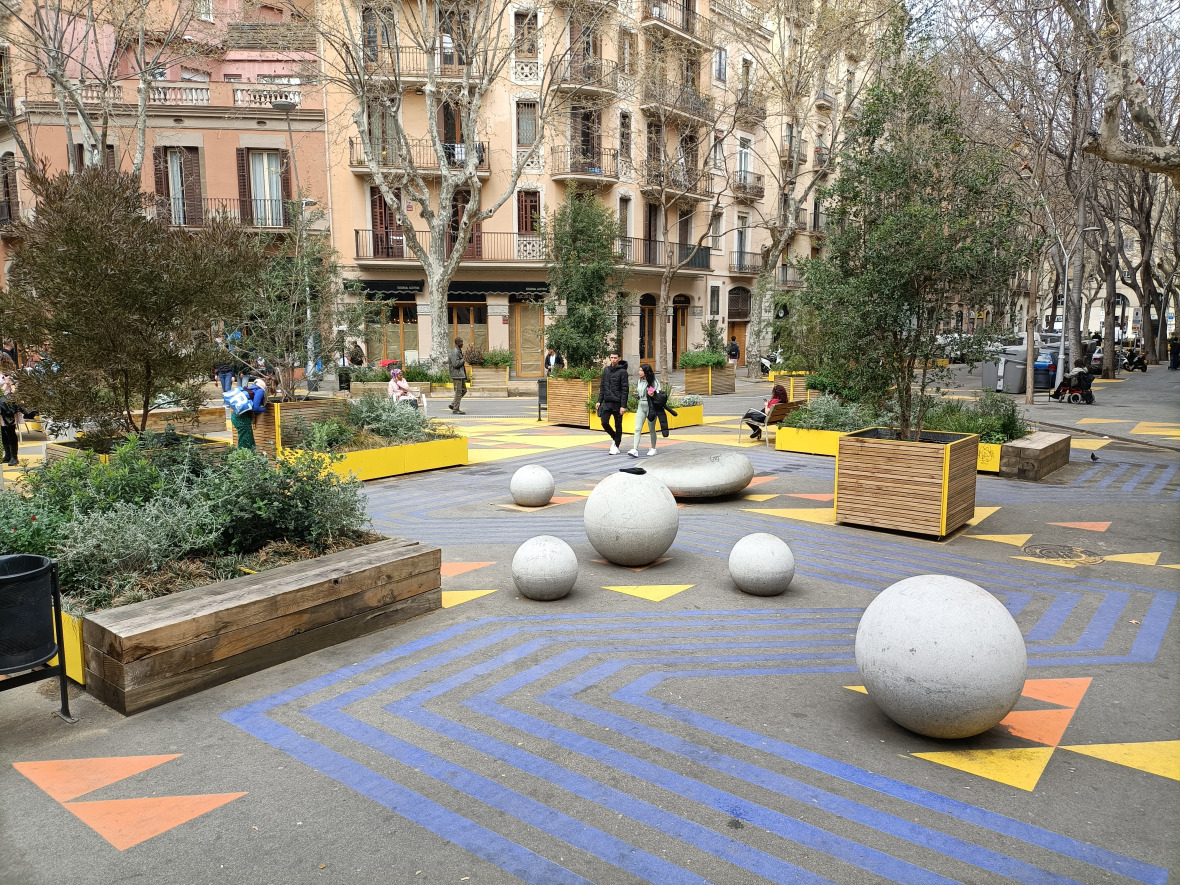
At the end of March, 2023, politicians and technical city officials from 15 European cities gathered in Barcelona for the International Superblock Meeting. The idea for the meeting emerged from a network of administrators exchanging as part of the TuneOurBlock project. Hosted by the city of Barcelona and supported by researchers from TuneOurBlock as well as representatives from civil society organizations, they discussed and discovered, encouraged, and inspired one another. Over the course of the three-day meeting, it became clear that the cities had much more in common than their different sizes, locations, and political contexts might have suggested.
Political leaders from the cities of Barcelona, Brussels, Ghent, Lublijana, Łódź, Lambeth/London, Milan, Paris, Valencia, and Vitoria-Gasteiz signed a Superblock Manifesto, linking them together with their commitments to sustainability transformations.
Speed, Scale, and Strategy in Urban Transformations
During the many discussions, it became apparent that many cities face common issues when planning and implementing superblocks or related measures. These issues often confront cities differently, depending on their strategy and context. Some cities – like Barcelona or Brussels or Berlin – take an approach rooted in tactical urbanism: beginning the transformation process by implementing temporary changes in the infrastructure and learning from the experience.
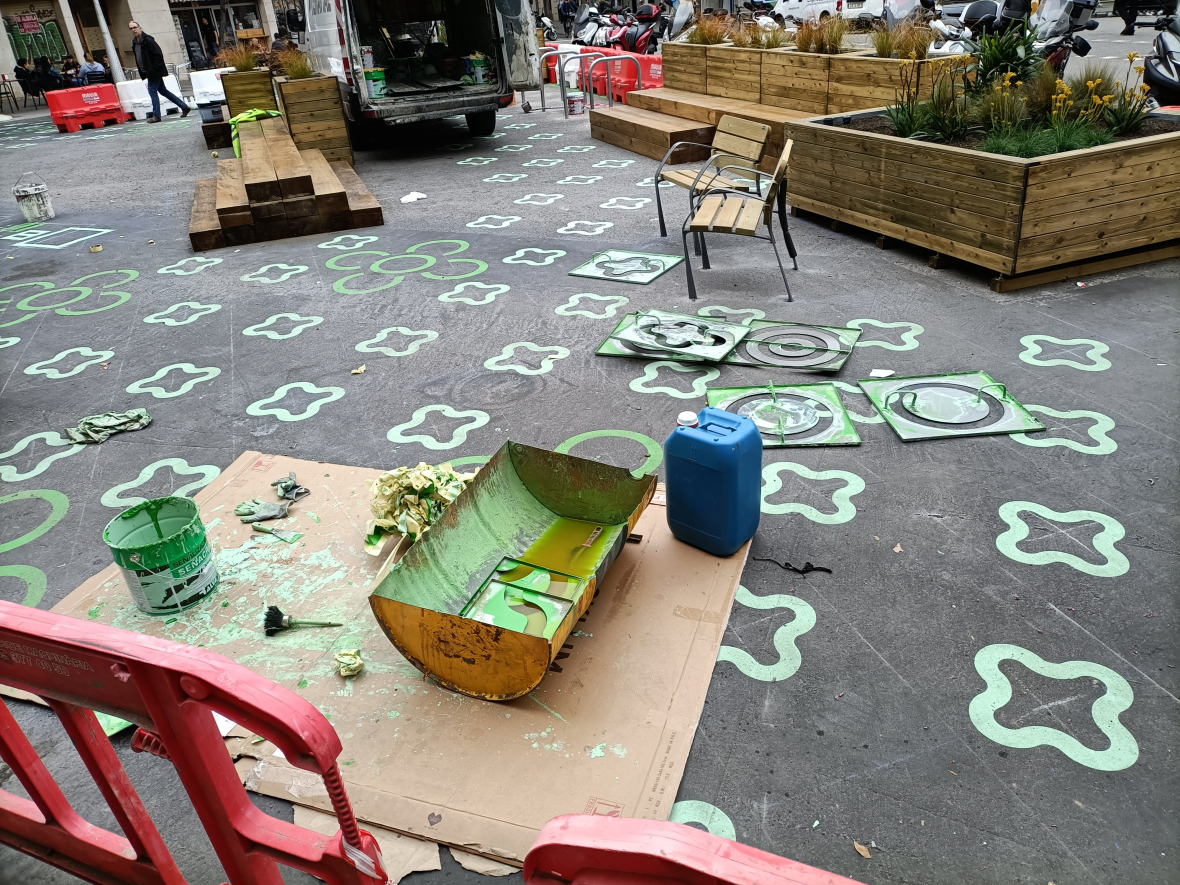
This learning-while-doing approach enables improvements and adaptation before making changes more permanent. The end result is often much better, because citizens and other stakeholders can contribute feedback based upon their experiences with new realities, as opposed to giving feedback to abstract planning ideas.
At the same time, this approach requires different types of resources than more traditional infrastructure changes might. While the costs of maintenance for provisional infrastructure can be higher in the short-term (e.g.: watering plants, cleaning public spaces, renewing paint), tactical-urbanism approaches also allows measures to be implemented more quickly, and – at least initially – at less cost than immediately implementing fully-fledged streetworks. The costs of changing more permanent implementations if the concepts don’t work as hoped are always higher than building in a provisional/tactical implementation step in the process. Further, a reduction in traffic violence, air- and noise pollution, and other goals can be realized much more quickly with tactical approaches, meaning citizens enjoy a better built urban environment now. An improvement now – however imperfect – is still an improvement that offers real benefits to enjoy while a more perfect solution is being discussed and planned.
Even while cities are focusing on a certain neighborhood for their tactical projects, many have a strategy to scale-up this accelerated transformation process in the back of their minds. Street furniture like planters with trees or other vegetation, benches, tables, and exercise and play equipment can be put to use in the next neighborhood once the initial project proceeds past the tactical phase. In this way, each project can be tailored to the specific needs of the neighborhood by using modular and durable tactical infrastructure elements.
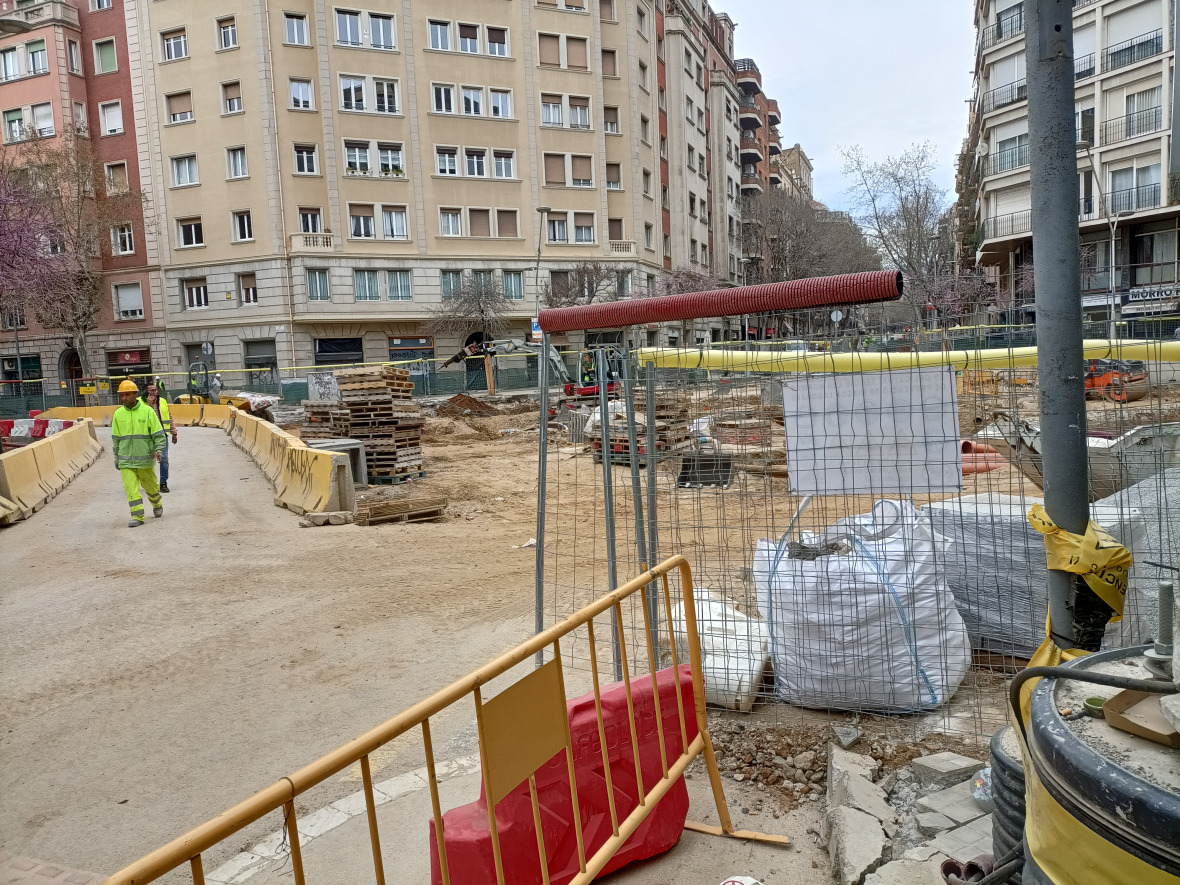
Participation and communication must be earnest and thorough, ensuring that the opportunity to improve the concept are actually taken advantage of. The mandate and intent to transform must also be made clear: the tactical-urbanism style transformation should not be seen as an experiment, as nobody wants to be a guinea pig. Instead, it should be clear that a transformation of urban space are proceeding, and tactical urbanism-style measures are just a step taken early in the process to ensure that the more permanent measures are gotten right.
One common conclusion heard from many cities is: it’s important to listen, and to talk about the transformation of the city. A lot. One nice example of this, was that two planners from Łódź did a very cool thing in the process of the urban transformations they were implementing: they got a coffee-machine and stood at their project sites, selling coffee. Because it takes a few minutes to make a coffee, they were able to use this time to speak with the neighbors who came by to get a coffee.
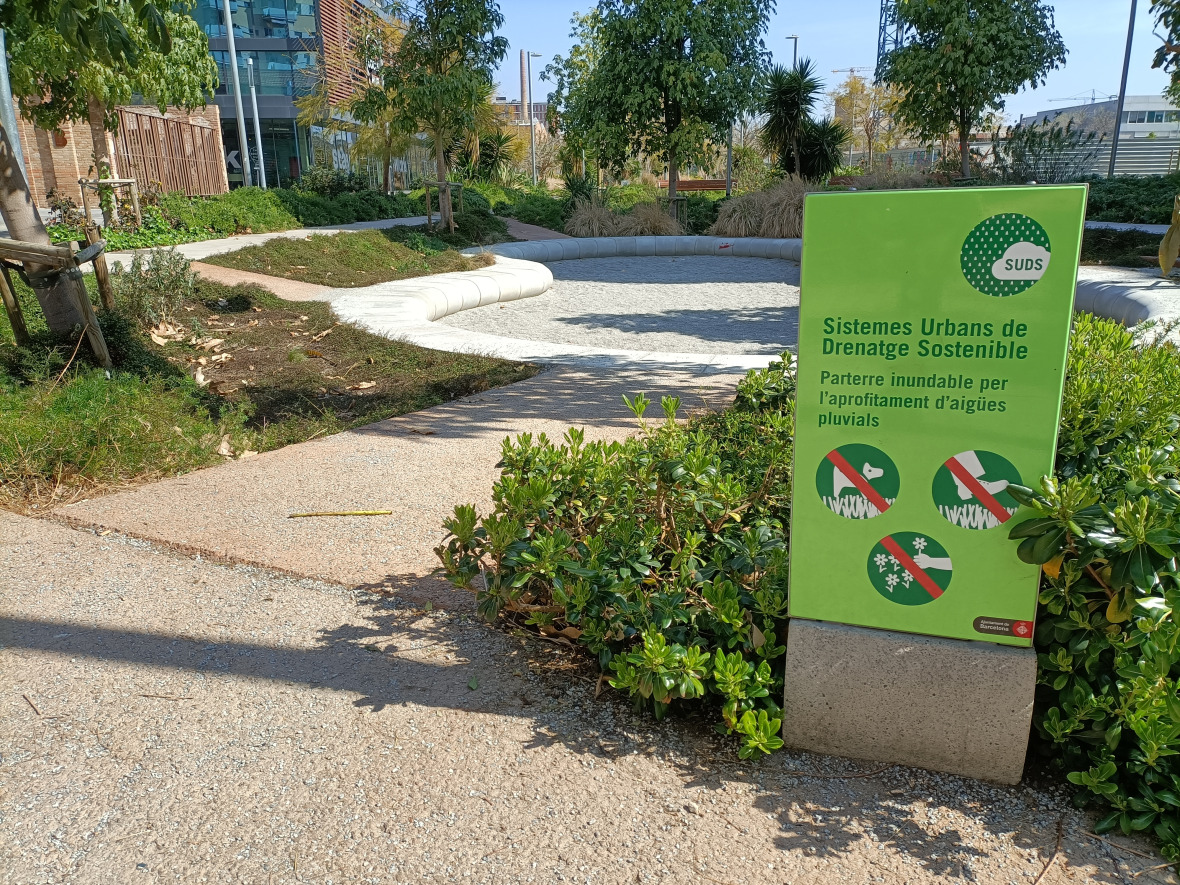
Urban Transformations Beyond the Surface
It is often seductive to focus on re-thinking mobility patterns and repurposing public space for uses beyond motor traffic that have been sidelined in our cities for years. But numerous technical experts made a convincing plaidoyer for looking beyond the conflicting goals of surface space distribution. Contrary to the focus of discussions on Kiezblocks and Co. in Germany, we must think of Superblock-measures not only in terms of what we do with the horizontal surface of the city, they argued, but also what we do with vertical city space: from the roofs and tree-tops to the tree-roots, pipes, and aquifers far below the surface. Perhaps because we as citizens rarely directly experience changes above and below the surface, these aspects are not emphasized in the public discourse surrounding Superblock-style urban transformations.
But it is not enough to consider how a tree-top might offer shade to a city street. The cooling effect of the tree-tops is contingent on the ability of the roots to expand deep below the surface. The health of the tree-roots is in turn dependent on the availability of water – a precious good that is dwindling in Berlin and Barcelona alike. Thus, cities cannot afford to squander run-off from rooftops and paved streets, but must maintain it to keep urban green alive. Barcelona runs two parallel water piping systems, one for fresh drinking water, and another for water that can be used for gathering and watering city green. Networks of underground aquifers gather and channel water in semi-permeable basins that allow water collected during strong, short rains to seep into the ground over the course of days and weeks, rather than being mixed with sewage and/or directly carried away.
This three-dimensional approach to Superblock-measures points to the gargantuan challenge of coordinating urban sustainability transformations. Achieving traffic safety, ensuring mobility, expanding urban green, maintaining public spaces, sustaining water resources, involving citizens and other stakeholders in balancing the (sometimes conflicting) goals are all intertwined objectives in this immensely complex process of transforming urban spaces to become more resilient and sustainable. This goes far beyond the already complex challenge of coordinating public utilities. If we’re digging up a street to renew pipes or create an even-level pedestrian zone, cities must consider the potential window of opportunity to implement a broad spectrum of changes. But coordinating the departments of a city responsible for diverse tasks such as installing new underground water basins, designing the streetscape, planting trees, renewing underground electric lines, gas- and water pipes, to mention a few, is a daunting task. And it is of course affected by current political and budgetary contexts.
In the end, though, one major take-away from the first International Superblock Meeting was that it’s worth it to try. The politicians and technical experts who participated in the meeting gave a strong impression of being dedicated to improving their cities. Numerous participants said that they were taking home not only good ideas from other cities, but also a healthy portion of empowerment. Knowing that they are in good company, and they are working hard alongside their counterparts across Europe to achieve sustainability transformations in their cities, might just be that extra boost needed to succeed.

